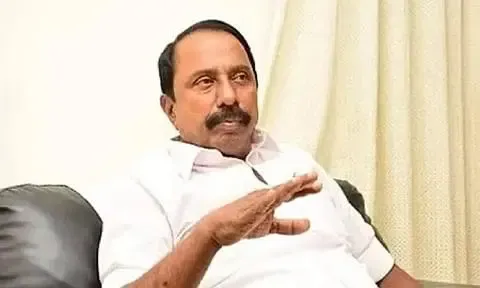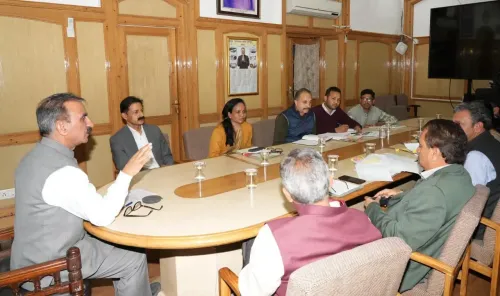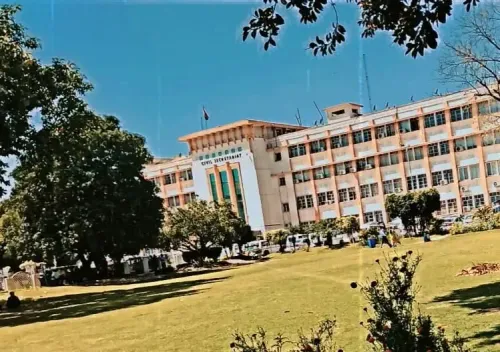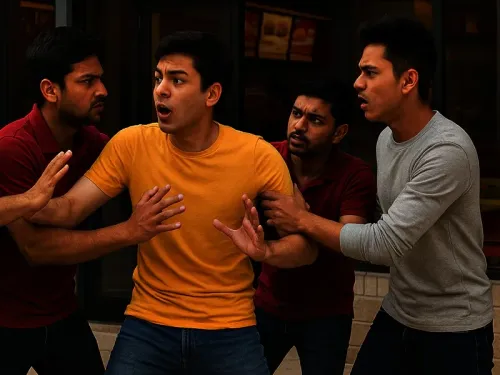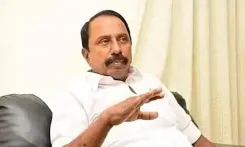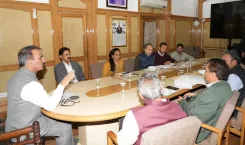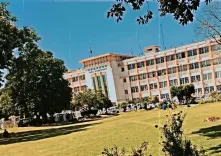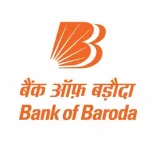Voter Engagement: High-Intensity Campaign for Delhi Elections Concludes
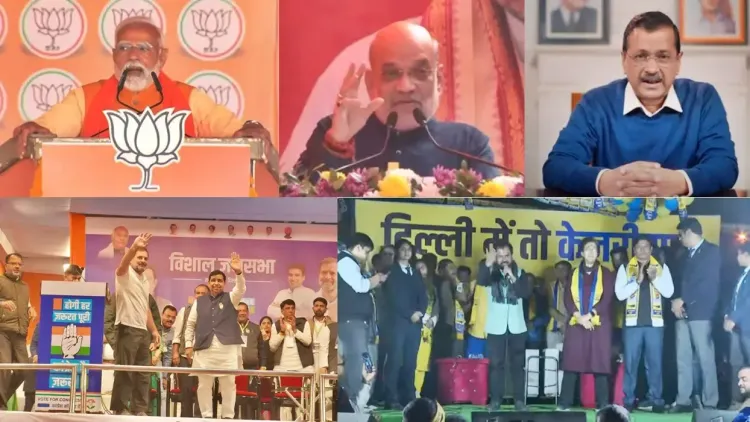
Synopsis
Key Takeaways
- High-decibel campaigning characterized by memes and jibes
- Major political figures from AAP, BJP, Congress active in campaigning
- Focus on voter incentives like financial assistance
- Allegations of poll code violations among parties
- Innovative tech used for voter engagement
New Delhi, Feb 3 (NationPress) The campaigning for the most fiercely contested Assembly election in Delhi concluded at 5 p.m. on Monday, marking the end of a months-long, high-voltage electioneering filled with AI-generated memes, incisive jabs, and intense rivalry to attract voters through various incentives, including monthly financial aid for women and youth.
The ruling AAP, along with the BJP and Congress, utilized their star campaigners extensively, led by Prime Minister Narendra Modi and key figures like Amit Shah, Rajnath Singh, and Piyush Goyal. Prominent Congress leaders Rahul Gandhi and Priyanka Gandhi Vadra, as well as former Chief Minister Arvind Kejriwal, Punjab CM Bhagwant Singh Mann, and several other Chief Ministers from BJP and Congress-ruled states, were also prominent.
Star power was added to the AAP campaign with the involvement of cricketer Harbhajan Singh and actor Shatrughan Sinha.
Key discussions revolved around cash assistance for women, heated debates concerning alleged corruption linked to the liquor scam and ‘Sheesh Mahal’, joblessness, water supply issues, air pollution, contaminated Yamuna, and free health insurance.
The campaign crescendoed into a direct contest with slogans like ‘Modi ki Guarantee’, ‘Kejriwal ki Guarantee’, and ‘Congress ki Guarantee’, as all three parties sought to charm voters with various freebies.
Frequent confrontations occurred between AAP, BJP, and Congress regarding alleged violations of the electoral code, deletion of voter registrations, suspected illegal voters, and misinformation aimed at manipulating public perception.
The critical constituencies of New Delhi, represented by AAP National Convenor Arvind Kejriwal, and Kalkaji, the seat held by Chief Minister Atishi, were focal points throughout the campaign.
This intense campaign ahead of the February 5 Assembly election has been marked by an unprecedented application of AI-generated spoofs and memes, sharp political satire, and high-decibel public rallies.
The tech-savvy campaign was complemented by traditional methods such as padyatras, corner meetings, printed handouts, newspaper advertisements, recorded calls from Kejriwal to voters, and personal letters from Delhi BJP chief Virendra Sachdeva.
On the final day of campaigning, the BJP conducted 22 roadshows and rallies across Delhi, while PM Modi released a video discussing his interactions with students, aiming to end AAP’s streak of three consecutive electoral victories since 2013.
In a similar vein, AAP’s concluding efforts included public meetings led by Kejriwal in Chhatarpur and Kalkaji and videos alleging attempts to manipulate EVMs.
Throughout the election, AAP emphasized issues like electoral code violations, alleged bias from the Election Commission favoring BJP, while promoting its development agenda and offering 15 guarantees, which included monthly financial support for women.
The ruling party expressed confidence in securing a fourth consecutive term, relying on its governance model of free welfare programs and countering allegations of corruption.
Meanwhile, Congress, which governed the capital for 15 years from 1998 to 2013, appeared revitalized, as a segment of Muslim voters displayed renewed confidence in the recent civic elections.
On Monday, the Delhi election office enforced a ban on public display of any election-related materials via cinematography, television, or similar means, as well as holding public meetings for a duration of “48 hours leading up to the conclusion of the election for the Legislative Assembly of NCT of Delhi-2025.”
On voting day, all attention will be directed towards voter turnout, with the election department making concerted efforts to encourage higher participation at polling stations.
Voter turnout in the 2020 Delhi Assembly election was recorded at 62.82%, down from 67.47% in 2015. The turnout in 2013 was 66.02%, which was 8.42% higher than the 57.6% in 2008.
The elections to select a new 70-member Delhi Assembly will take place on February 5, with results announced on February 8. In the outgoing assembly, AAP holds 62 seats while BJP has 8.
According to the Delhi Chief Electoral Officer (CEO), there are 1.56 crore eligible voters across 13,766 polling stations. This includes 83.76 lakh men, 72.36 lakh women, and 1,267 third-gender voters.
A total of 699 candidates are contesting, compared to 672 in the 2020 elections.
The Election Commission has also implemented a Queue Management System (QMS) application for the first time in India, allowing voters to check real-time crowd levels at polling stations through the Delhi Election - 2025 QMS app.
Under the home voting initiative for senior citizens and individuals with disabilities, nearly 7,000 eligible voters have already cast their votes prior to the initial EVM activation on polling day.

